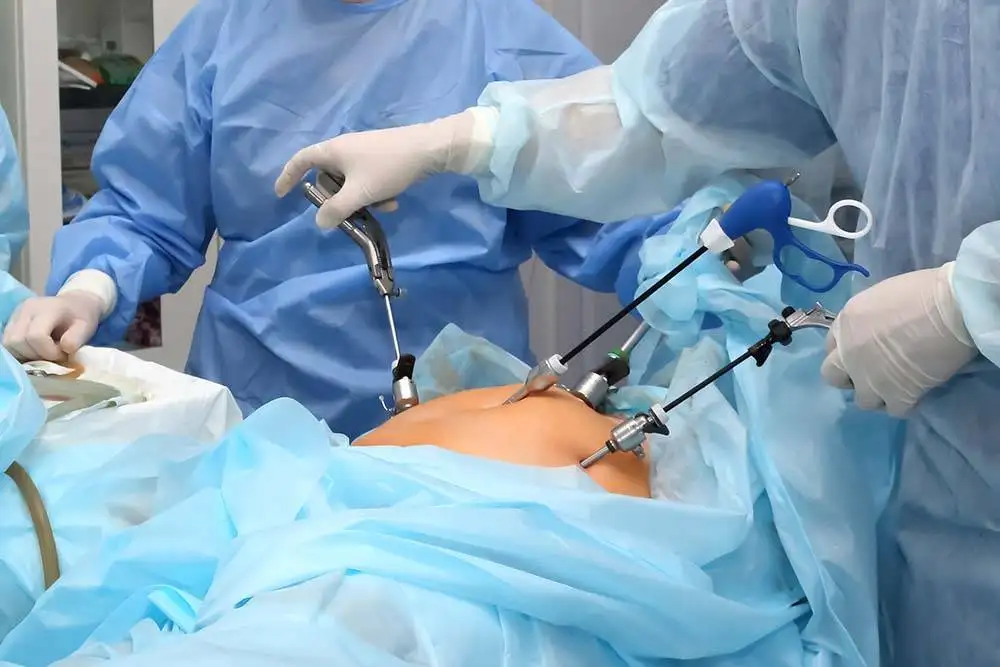Laparoscopy Surgery

Laparoscopy Surgery
Laparoscopy surgery, also known as minimally invasive surgery or keyhole surgery, is a modern surgical technique that uses small incisions and a camera to perform procedures with greater precision, less pain, and a quicker recovery time. It’s used to treat various medical conditions involving the abdomen, pelvic area, and other organs. In this guide, we’ll dive into everything you need to know about laparoscopy surgery, including its benefits, the procedure, and the recovery process.
Laparoscopy surgery, also known as minimally invasive surgery or keyhole surgery, is a revolutionary technique in the medical world. With its ability to treat a variety of conditions using only small incisions, it offers several advantages over traditional open surgery, such as reduced recovery time, less pain, and minimal scarring.
What is Laparoscopy Surgery?
Common Types of Laparoscopy Surgery
- Gallbladder Removal (Cholecystectomy): One of the most common uses for laparoscopy is to remove the gallbladder in patients suffering from gallstones or other gallbladder-related conditions. Laparoscopic cholecystectomy offers a faster recovery time compared to traditional open surgery.
- Appendectomy: Laparoscopic appendectomy is performed to remove the appendix in cases of appendicitis. It typically results in less pain and faster recovery than the traditional open surgery method.
- Hernia Repair: Laparoscopy is frequently used to repair hernias, particularly in the abdomen. This minimally invasive approach results in smaller scars and less post-operative discomfort.
- Endometriosis Surgery: Laparoscopy is often used to diagnose and treat endometriosis, a condition where tissue similar to the uterine lining grows outside the uterus. The surgery can remove abnormal tissue and improve symptoms.
- Bariatric Surgery: Laparoscopy is commonly used in weight-loss surgeries, such as gastric bypass or sleeve gastrectomy, where a surgeon makes small incisions to perform the procedure, resulting in less scarring and quicker recovery.
- Gynecological Surgeries: Laparoscopy is widely used in gynecological procedures, such as ovarian cyst removal, fibroid removal, and tubal ligation, due to its minimally invasive nature.
- Diagnostic Laparoscopy: In some cases, laparoscopy is performed as a diagnostic tool to examine organs like the liver, pancreas, or intestines. It is used when the cause of symptoms is unclear and can provide the surgeon with valuable information for a diagnosis.
Benefits of Laparoscopy Surgery
- Smaller Incisions: One of the most significant advantages of laparoscopy surgery is the use of small incisions (typically about 1-2 cm) instead of large cuts. This reduces the risk of infection or minimizes scarring.
- Quicker Recovery: Laparoscopic procedures generally result in shorter hospital stays and faster recovery times compared to traditional open surgeries.
- Less Pain: Because the incisions are smaller, patients often experience less post-operative pain, requiring fewer pain medications.
- Lower Risk of Complications: Laparoscopy surgery typically involves less tissue damage and a lower risk of complications, such as bleeding or infection, compared to conventional surgery.
- Better Cosmetic Results: The small incisions made during laparoscopy result in minimal scarring, which is often barely noticeable after recovery.
How Laparoscopy Surgery is Performed
The procedure for laparoscopy surgery generally involves the following steps:
- Preparation: Before the surgery, the patient will be asked to fast for a certain period, typically 8-12 hours, to ensure the stomach is empty. The surgeon will administer anesthesia to keep the patient comfortable during the procedure.
- Insertion of the Laparoscope: The surgeon makes small incisions, typically near the belly button, to insert the laparoscope and other surgical instruments. The laparoscope is equipped with a light and camera, providing the surgeon with a clear view of the internal area.
- Surgical Procedure: Once the laparoscope is in place, the surgeon can perform the necessary procedure. Depending on the condition, the surgeon may remove organs, repair tissues, or perform biopsies.
- Post-Procedure: After the surgery is complete, the instruments are removed, and the small incisions are closed with stitches or adhesive strips. The patient is then monitored in a recovery room before being discharged, typically within a few hours or the same day.
Recovery After Laparoscopy Surgery
Recovery time after laparoscopy surgery is generally faster compared to traditional surgery. Here’s what you can expect during a recovery process:
- Hospital Stay: Most laparoscopy procedures are outpatient, meaning the patient can go home the same day. However, some complex procedures may require a short hospital stay.
- Post-Surgical Care: Patients are usually advised to take it easy for the first few days after surgery. Pain is generally mild and can be managed with over-the-counter medications.
- Return to Normal Activities: Most people can return to work and normal activities within a few days to a week, depending on the procedure and the individual’s recovery. Physical activities like heavy lifting or strenuous exercise should be avoided for several weeks.
- Follow-Up Appointments: Patients will be asked to follow up with their surgeon to ensure proper healing and monitor for any signs of complications.
